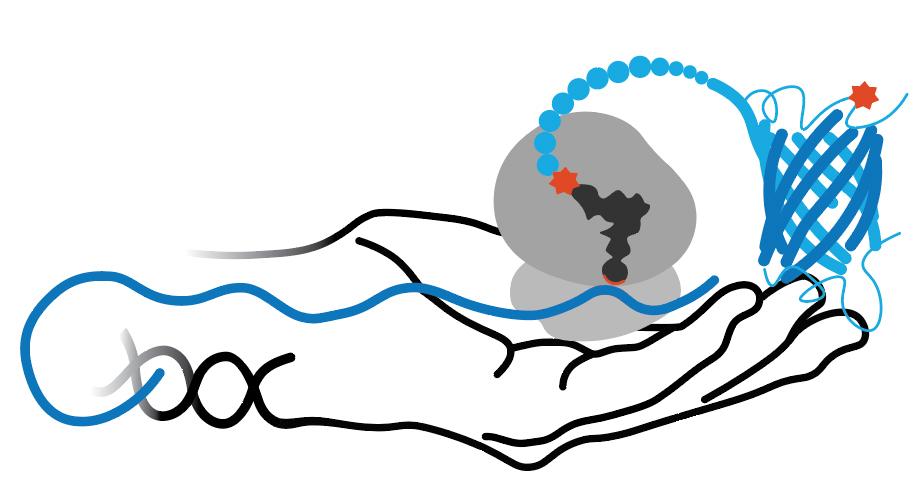RS/tRNA Foundational Publication Support
Speight, Lee, Anand Muthusamy, Jacob Goldberg, John Warner, Rebecca Wissner, Taylor Willi, Bradley Woodman, Ryan A Mehl, and James Petersson. (2013) 2013. “Efficient Synthesis And In Vivo Incorporation Of Acridon-2-Ylalanine, A Fluorescent Amino Acid For Lifetime And Förster Resonance Energy Transfer/Luminescence Resonance Energy Transfer Studies.”. Journal Of The American Chemical Society 135 (50): 18806-14. doi:10.1021/ja403247j.
RS/tRNA Usage Publications
Padmanarayana, Murugesh, Nicole Hams, Lee C Speight, James Petersson, Ryan A Mehl, and Colin P Johnson. (2014) 2014. “Characterization Of The Lipid Binding Properties Of Otoferlin Reveals Specific Interactions Between Pi(4,5)P2 And The C2C And C2F Domains.”. Biochemistry 53 (30): 5023-33. doi:10.1021/bi5004469.
RS/tRNA Pair Development Year
2013
ncAA(s) Incorporated
acridonylalanine
ncAA Structure (png, jpg, jpeg)

ncAA Utility
It is a blue-wavelength fluorescent probe used for monitoring conformational changes and other molecular dynamics in proteins. The 2013 and 2021 foundational publications provide information on its properties, and a 2023 paper (doi: 10.1002/pro.4633) provides examples of its use in FRET studies.
RS Organism of Origin
Parent RS
RS Mutations
Y32G
L65E
D158G
I159C
L65E
D158G
I159C
tRNA Organism of Origin
Parent tRNA
tRNA Anticodon
CUA
RS/tRNA Availability
no commercial availability
RS/tRNA Additional Notes
Not selected de novo, but 2 hits found a by permissivity screen of 8 RSs isolated earlier for a different ncAA. Best one showed roughly 60% efficiency with Acd into GFP150 (Fig 3 of paper) and second best showed ~50% efficiency (with same mutations at Y32 and L65 plus F108W, Q109M and D158S). Best one, renamed AcdRS, was used for incorporation into 3 other proteins with efficiencies ranging from 3 - 69%.
A problem identified was some misincorporation of N-phenyl-p-aminophenylalanine (Npf) which can be a side product of Acd preparations.
A problem identified was some misincorporation of N-phenyl-p-aminophenylalanine (Npf) which can be a side product of Acd preparations.
